Also known as the Russian wolfhound, the borzoi is an elegant and graceful dog with a glamorous fur coat. These regal hounds come in an exquisite kaleidoscope of different colors, from rich reds to stunning blacks and vibrant splashes of gold. Below, we’ve compiled a list of borzoi colors, from the rarest gems to the most common hues!
Borzoi Markings and Patterns
In addition to the main coat color, a borzoi may also sport a combination of various markings or patterns, including:
- White trim: Many borzois have a white belly, white rings around their necks, or white socks (white paws).
- Colored spots: Although a borzoi may be predominantly white or cream, they can also have beautifully colored spots and patches throughout their coat.
- Black mask: Many borzois have dark or black fur on their face and around their eyes, making it look like they are wearing a mask.
- Ticking: Borzois may have tiny flecks of color throughout their coats, called “ticking”.
The Rarest Borzoi Colors
1. Blue, Blue and Cream, and Blue Brindle

Blue borzois may also have patches of light gray or white.
©Natalia Demidchick/iStock via Getty Images
One of the rarest borzoi colors is blue, which is the result of a recessive gene. This gene causes a dilution in the dog’s coat, transforming the typical black pigments into a lovely blue color. This blueish coloring can range from silvery gray to a deep slate hue.
Blue borzois may also have darker-colored stripes, which is called “brindling”. In addition, there are borzois with a rare blue and cream coat, the result of a recessive DD gene mutation.
2. Mahogany Brindle
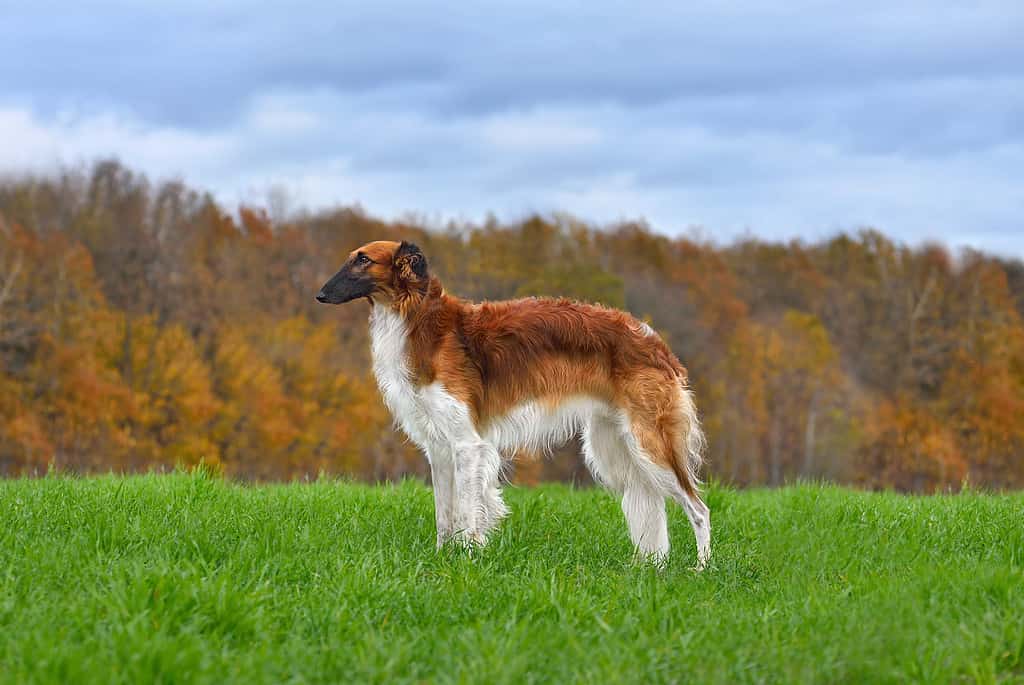
Dogs can have bold stripes or very faint ones that are hard to see.
©eAlisa/iStock via Getty Images
Borzois with mahogany brindle coats are uncommon. The base of their hair is a rich, mahogany red color, with darker stripes overlaid on top. This creates a unique brindle pattern that looks similar to a tiger’s stripes.
3. Gold Brindle and Gold Sable
Borzois with golden brindle coloring are rare and only come about through very careful, intentional breeding. These dogs have a special gene called the gold extension locus.
Borzois with gold sable coats also have a golden color. However, instead of brindling, each of their hairs has a golden base that fades into a cream or reddish color on the tips.
4. Brown
Borzois with brown or liver-colored coats are quite rare. Many darker borzois may appear brown at first glance, but more commonly they have sable or mahogany-colored hair with a slight bit of brindling. This combination can make them appear brown in the right light, but in reality, their hair isn’t really brown.
5. Fawn
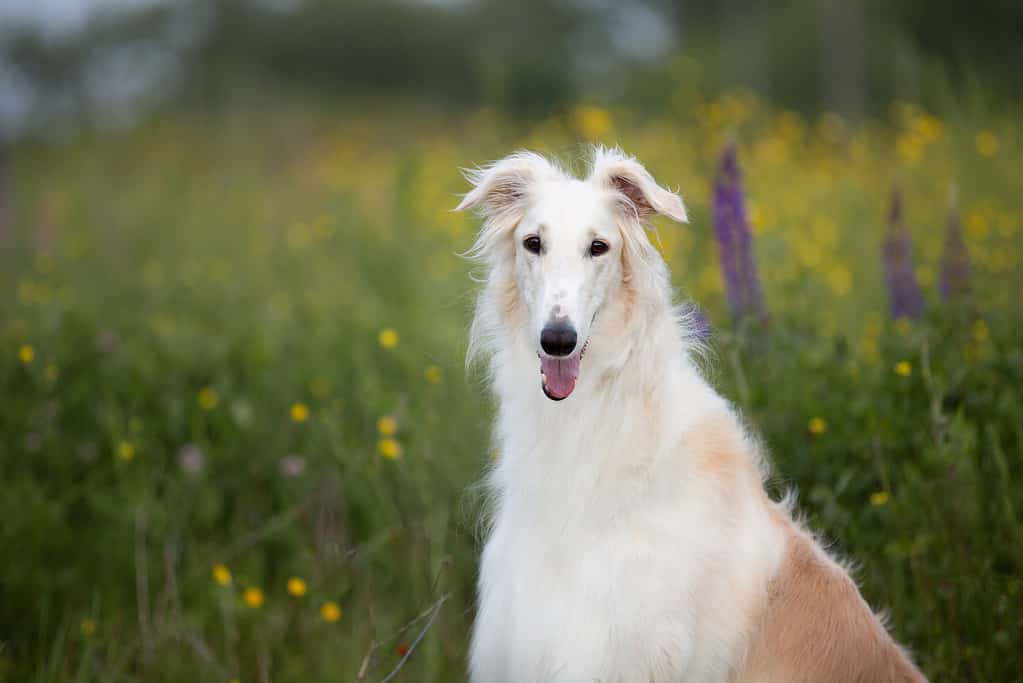
Fawn dogs can also have black masks.
©Anastasiia Cherniavskaia/iStock via Getty Images
Borzoi dogs with fawn-colored coats have intense red hues with black-tipped hairs scattered throughout. This creates a light, yellowish-tan color that ranges from pale to dark deer-red hues.
6. Brindle
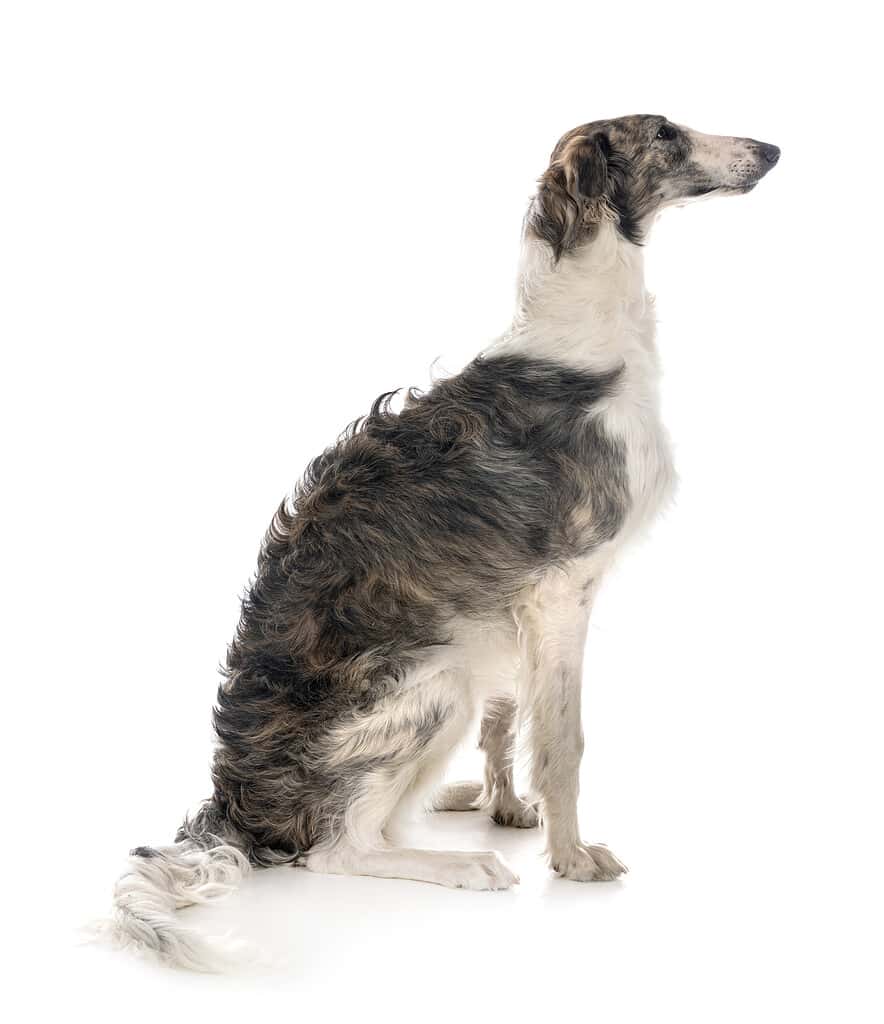
Brindling creates stripes or swirls in the dog’s coat.
©cynoclub/iStock via Getty Images
Borzois with brindle coats have lovely black stripes or swirls in their fur. Some brindle patterns are thick and bold, while others are thinner and harder to see. Brindling occurs due to a Kbr gene, which mixes up the normal black and red colors in the dogs’ fur and creates breaks in the black pattern.
7. Silver

Silver borzoi boats have a unique shimmering quality.
©Olha Haletska/iStock via Getty Images
Borzois with silver coats have a pearlescent sheen due to a Kbr gene. This gene dilutes the usual black hues, giving the dog’s coat a mix of both black and gray hairs. Their bodies often have darker colored hair, but each hair is tipped with a lighter hue, which also contributes to their unique silver coloring.
More Common Borzoi Colors
8. Black and Cream or Black and Brindle

Many black and cream borzois also have a black mask.
©eAlisa/iStock via Getty Images
Black and cream borzois are difficult to distinguish because their lighter markings can look more white than cream.
Black and brindle borzois are also difficult to identify, as their hair can be so dark that it’s difficult to see the brindled patterns. However, these dogs have darker black stripes on their black fur, while pure black borzois don’t have any striping patterns.
9. Black and Tan
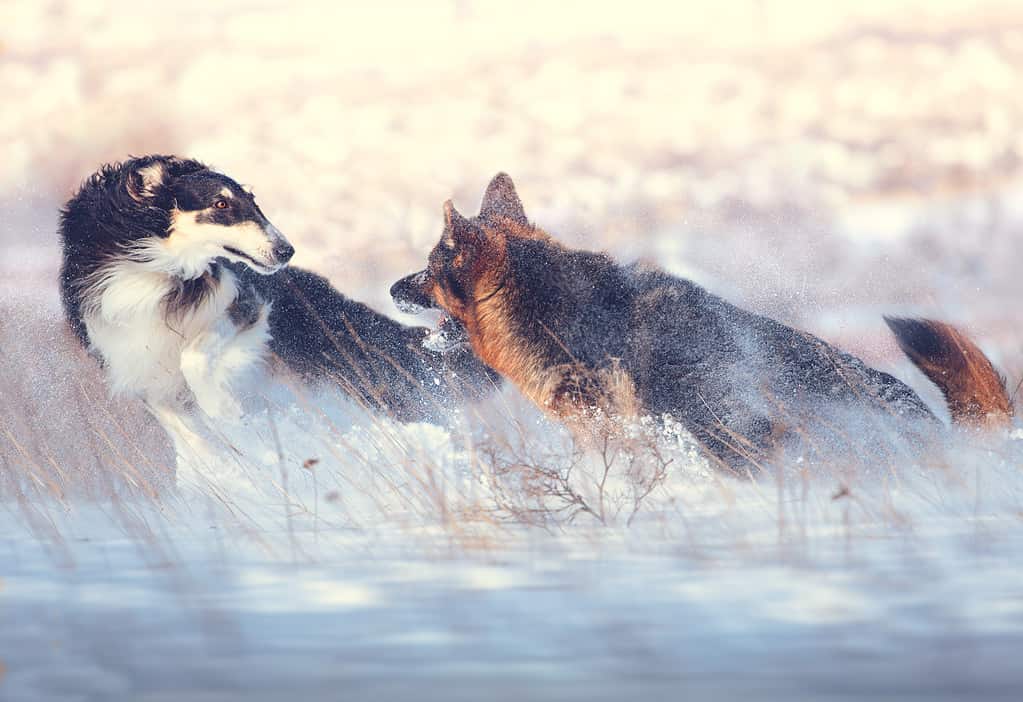
Black and tan borzois have distinct lighter colored points.
©Ashva/iStock via Getty Images
Borzois with black and tan coats often have light tan colored hair on their cheeks, chest, and legs, while their bodies are a striking black shade. As puppies, they can appear very dark, but their tan accents appear within the first few weeks of life.
10. Red Brindle and Red Sable
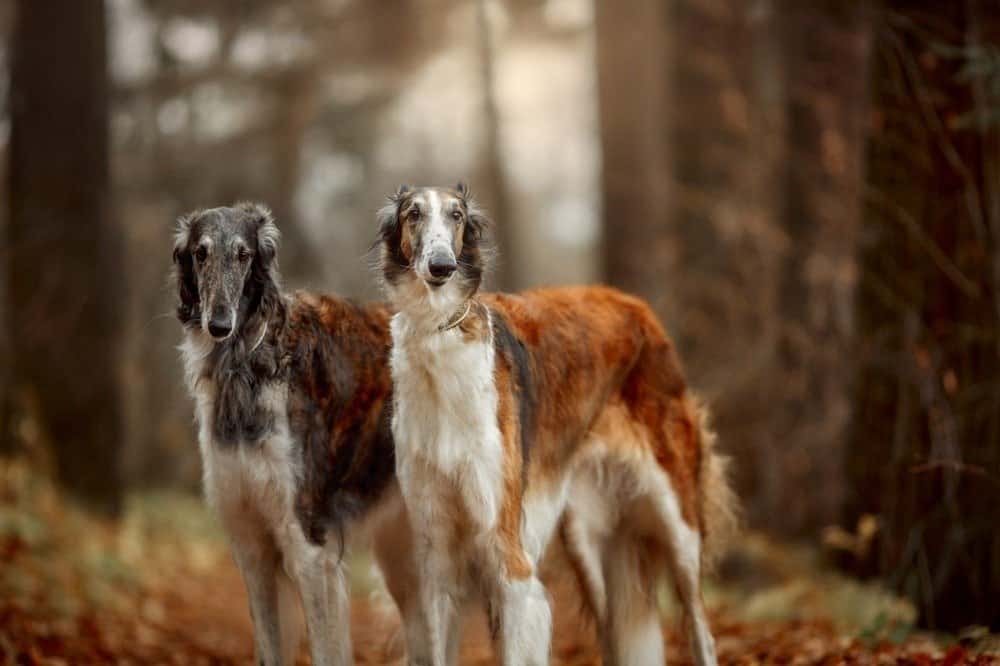
Red brindle dogs have black hairs, whereas red sable dogs do not.
©Julia Shepeleva/Shutterstock.com
Borzois with red coats sometimes have brindled patterns, which means that they have striping on their warm-colored coats. However, the red tones of their coats are much more dominant than these brindle patterns.
On the other hand, the base of a red sable borzoi’s coat is a warm, orange-red hue. Each hair transitions from this warm-colored base to dark brown or black tips.
11. Silver Brindle and Silver Sable
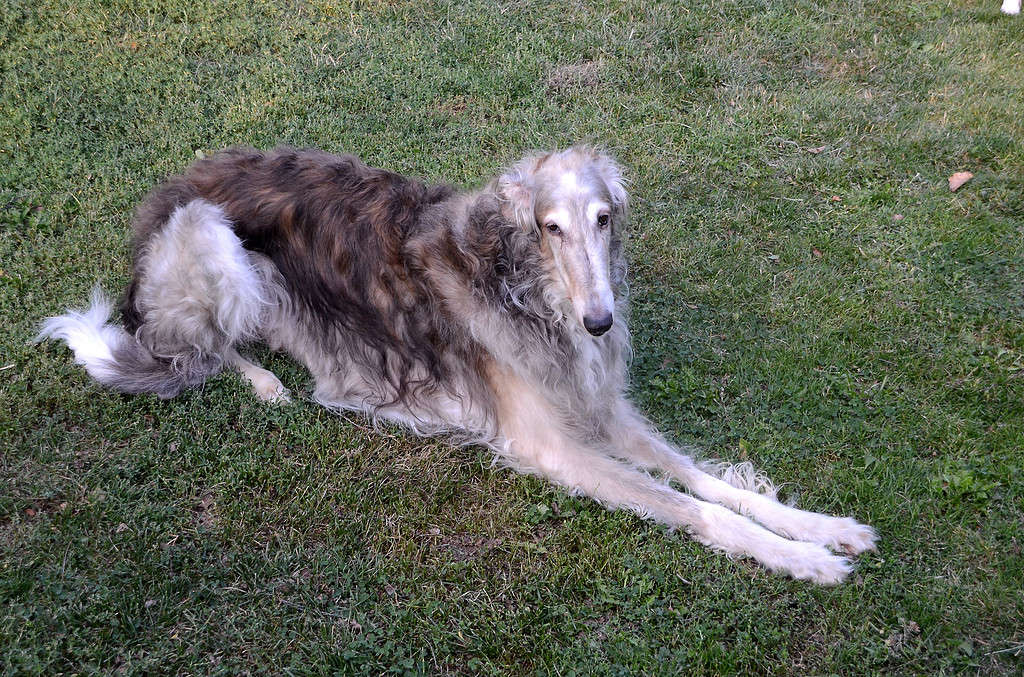
A silver brindle borzoi is a cream dog with brindle markings.
©nemoris/iStock via Getty Images
Silver brindle borzois have cream-colored coats and striking brindle markings. Their light and dark hairs blend and create a lovely silver coloring that shimmers alongside their brindle patterning.
Silver sable dogs, on the other hand, have a reddish hue at the base of their hair that fades into a pale, cream color at the ends. This makes their coats look silvery instead of cream or white.
12. Brindled Sable
The base of the hair on a brindled sable borzoi ranges from deep to sable brown or mahogany. It transitions into a lighter hue on the tips of the hair, adding depth and shimmer to the coat’s overall appearance. The brindle pattern also creates a swirled or marbled effect, blending the darker brown shades with hints of gold or cream.
The Most Common Borzoi Colors
13. Black
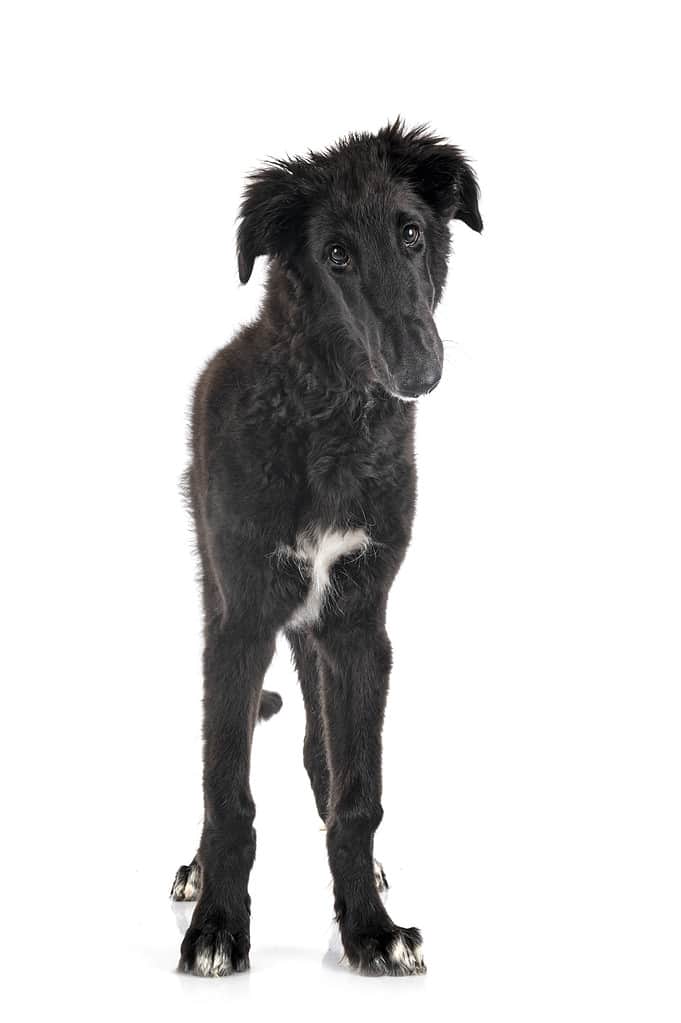
Many black borzois have white trim markings.
©cynoclub/iStock via Getty Images
Black borzois have deep and rich black coats that highlight their streamlined and statuesque bodies. Some dark-colored borzois may appear to be black as well, but true black borzois don’t have any light coloring on their legs or extremities.
14. Red
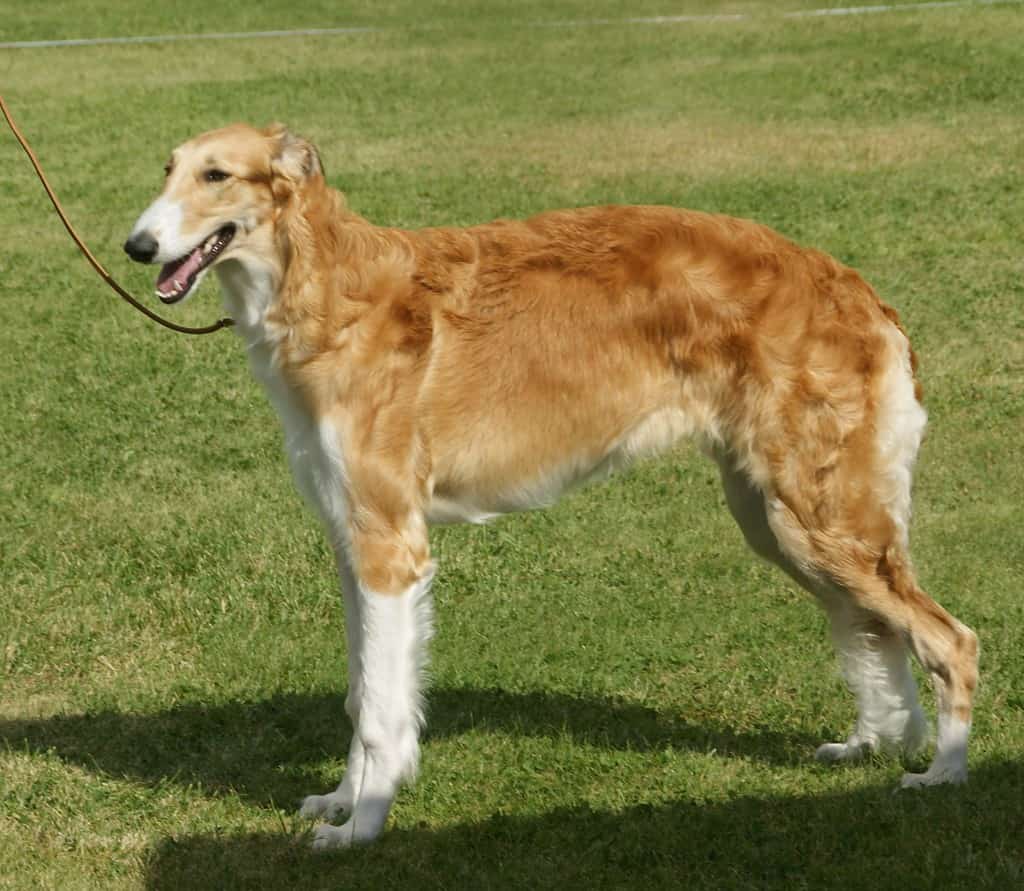
Red borzois do not have any black hairs.
©Canarian / CC BY-SA 4.0 via Wikimedia Commons – License
Borzois with red fur coats have very warm, lush coloring without any black hair. It is also common for them to have white fur on their chests and legs as well.
15. Gold
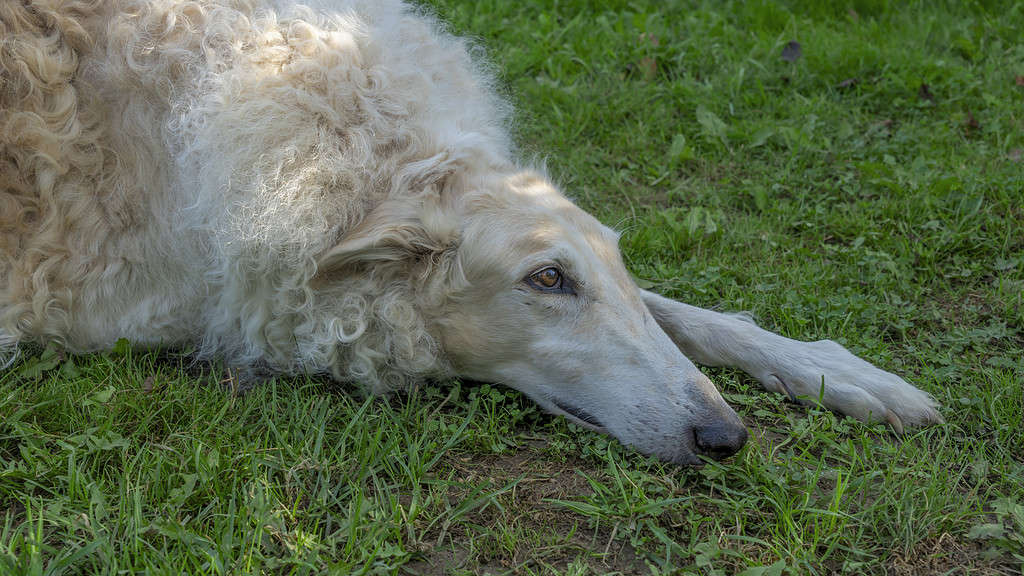
Borzoi dogs can have wavy, silky, or even curly fur coats.
©Ivan Murauyou/iStock via Getty Images
Borzois with gold coats have a unique gene that prevents black hair from growing as they get older. Their light, golden coats may also have white markings.
16. Tricolor
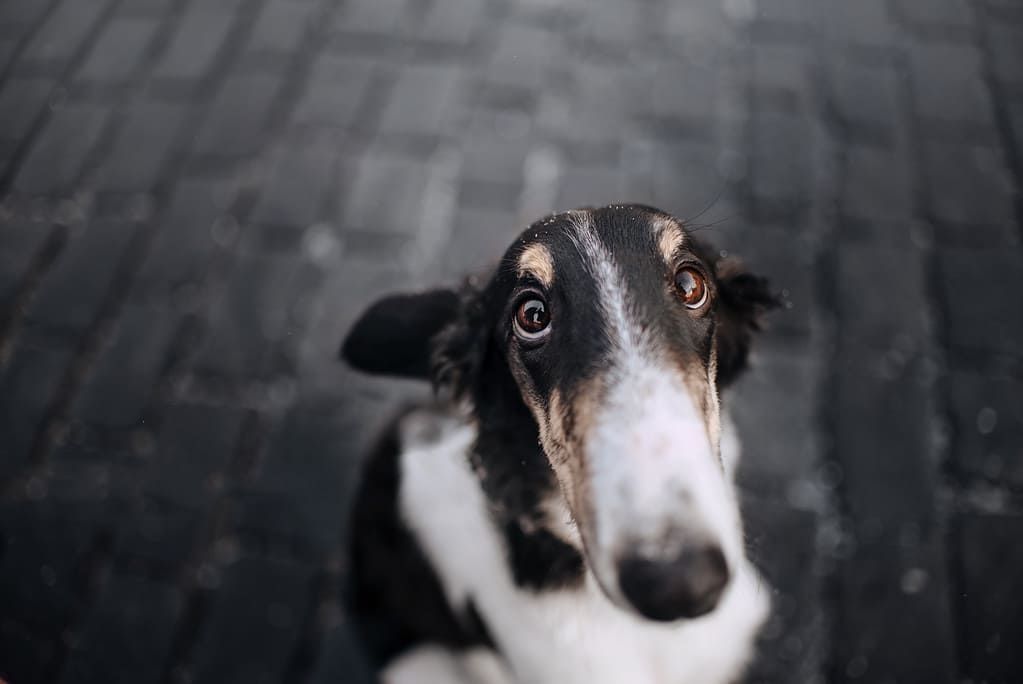
Borzois were originally used to hunt wolves.
©Ksenia Raykova/iStock via Getty Images
No two tricolor borzois look exactly the same, as each has its own unique combination of three different colors. Triocolor borzois are typically black and white with contrasting patches of brown, sable, or tan.
17. Sable
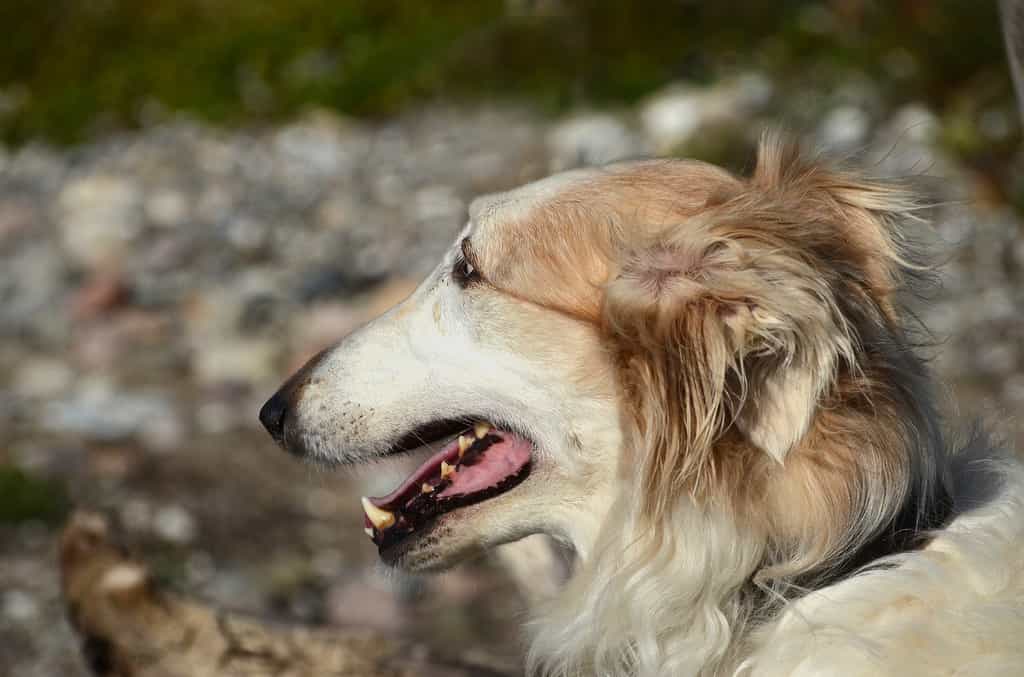
Sable borzois do not have black masks.
©nemoris/iStock via Getty Images
A sable fur coat is a mixture of colors that produce a warm and earthy hue. The base of each hair is pale while the tips are much darker, which gives them a unique, shimmering quality.
18. Apricot
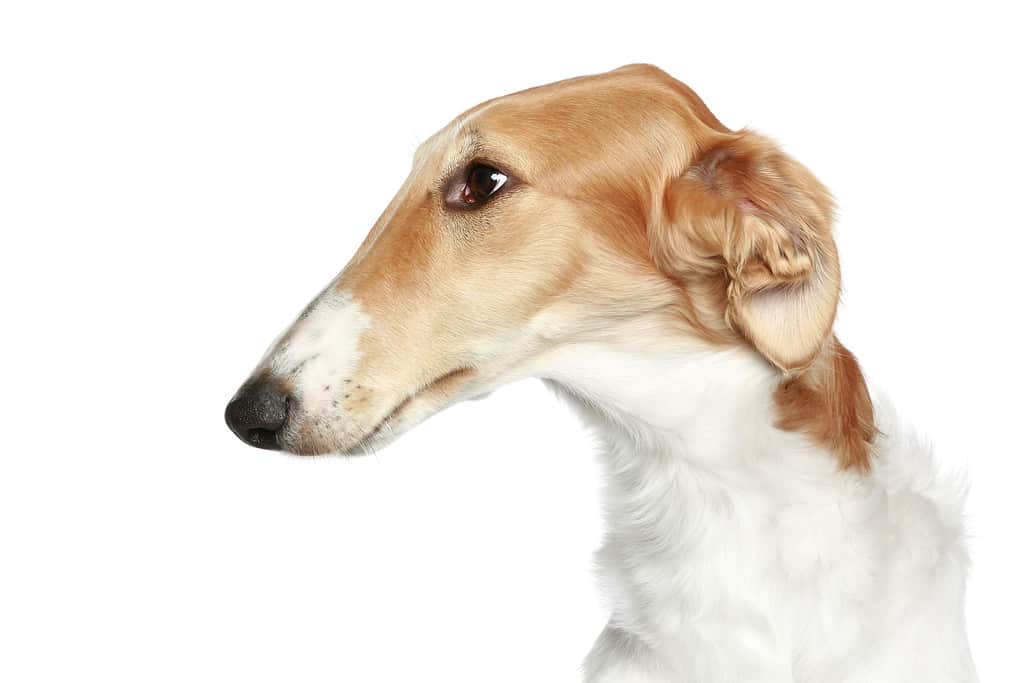
Borzois have a very distinct profile, due to their elongated
nose
.
©Marina Maslennikova/iStock via Getty Images
Borzois with apricot coats look somewhat similar to gold borzois. However, their coats have much more intensified red hues.
19. Mahogany Red
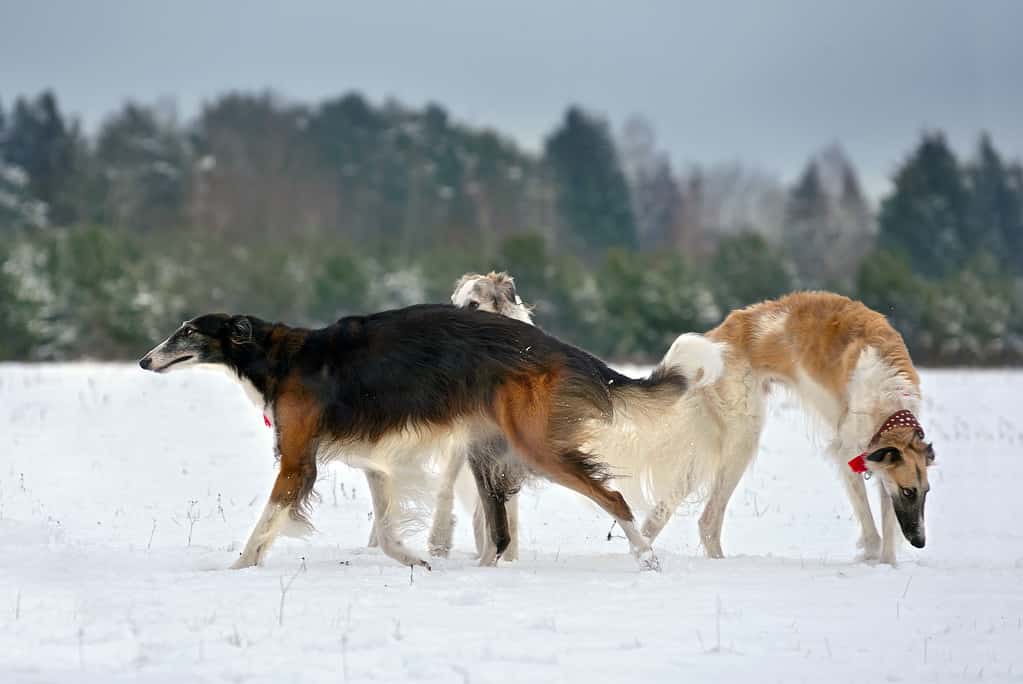
Younger dogs may have darker-colored hair.
©eAlisa/iStock via Getty Images
Borzois with mahogany red hair have rich red tones. However, this red is much darker and more sable than a traditional red borzoi.
20. White or Cream
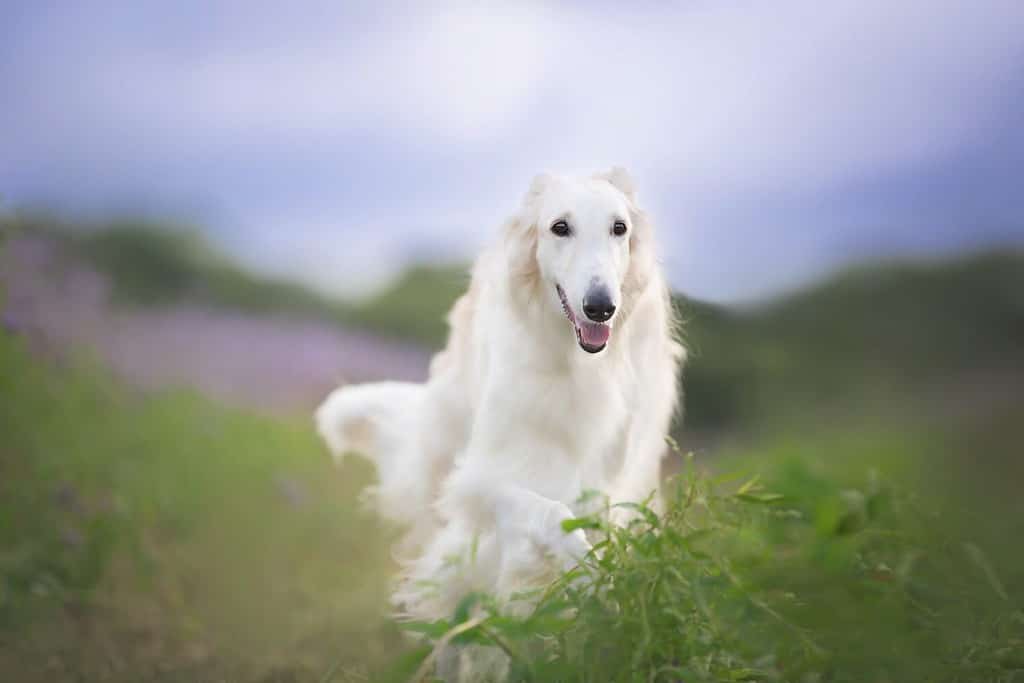
Cream and white are the most common borzoi colors.
©Anastasiia Cherniavskaia/Shutterstock.com
White is one of the most common colors in borzois, although there isn’t a “pure white” borzoi. Due to the lighting, their coats may appear to be a pristine white, but in reality, their hairs are extremely light cream, silver, or gold. In addition, white borzois may also have colored patches throughout their coats.
Borzois with cream coats have a warmer base than those with white, often with very faint reddish or yellowish undertones. As puppies, cream borzois have silver-gray fur, but as they get older this is replaced by their iconic creamy coloring.
The photo featured at the top of this post is © volofin/Shutterstock.com
Ready to discover the top 10 cutest dog breeds in the entire world?
How about the fastest dogs, the largest dogs and those that are -- quite frankly -- just the kindest dogs on the planet? Each day, AZ Animals sends out lists just like this to our thousands of email subscribers. And the best part? It's FREE. Join today by entering your email below.
Thank you for reading! Have some feedback for us? Contact the AZ Animals editorial team.






